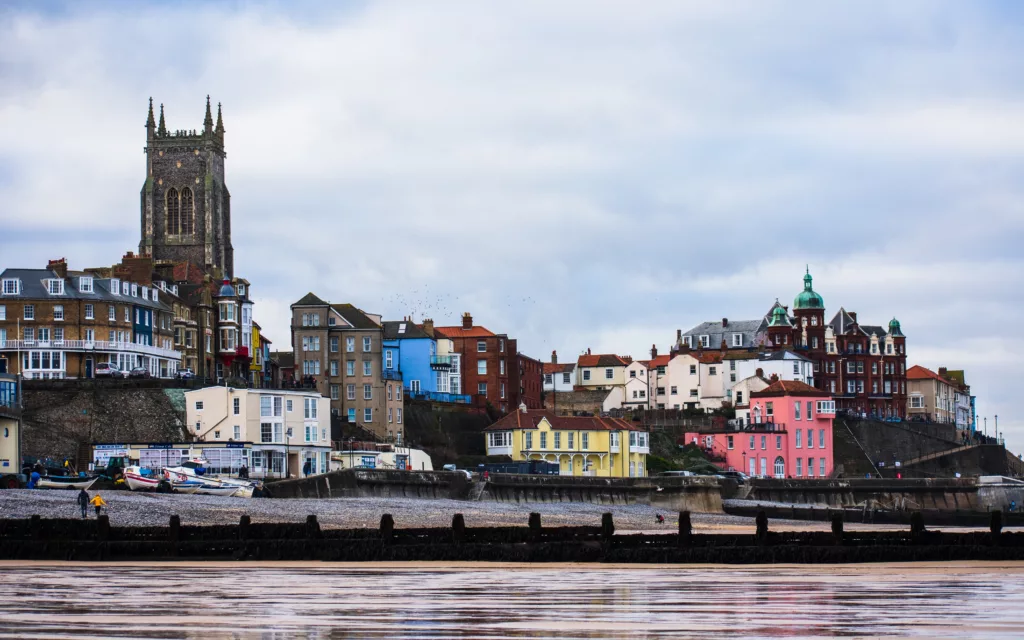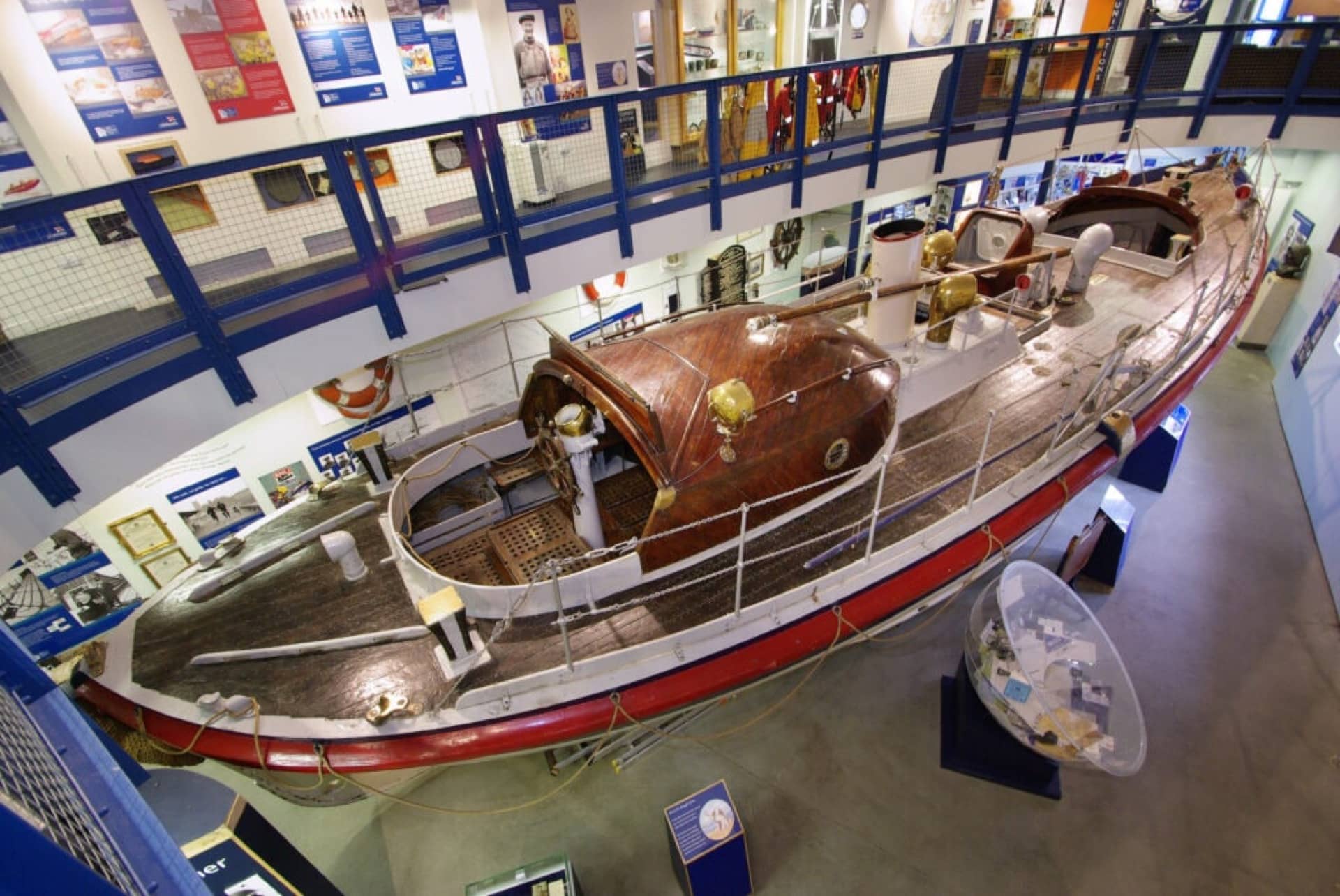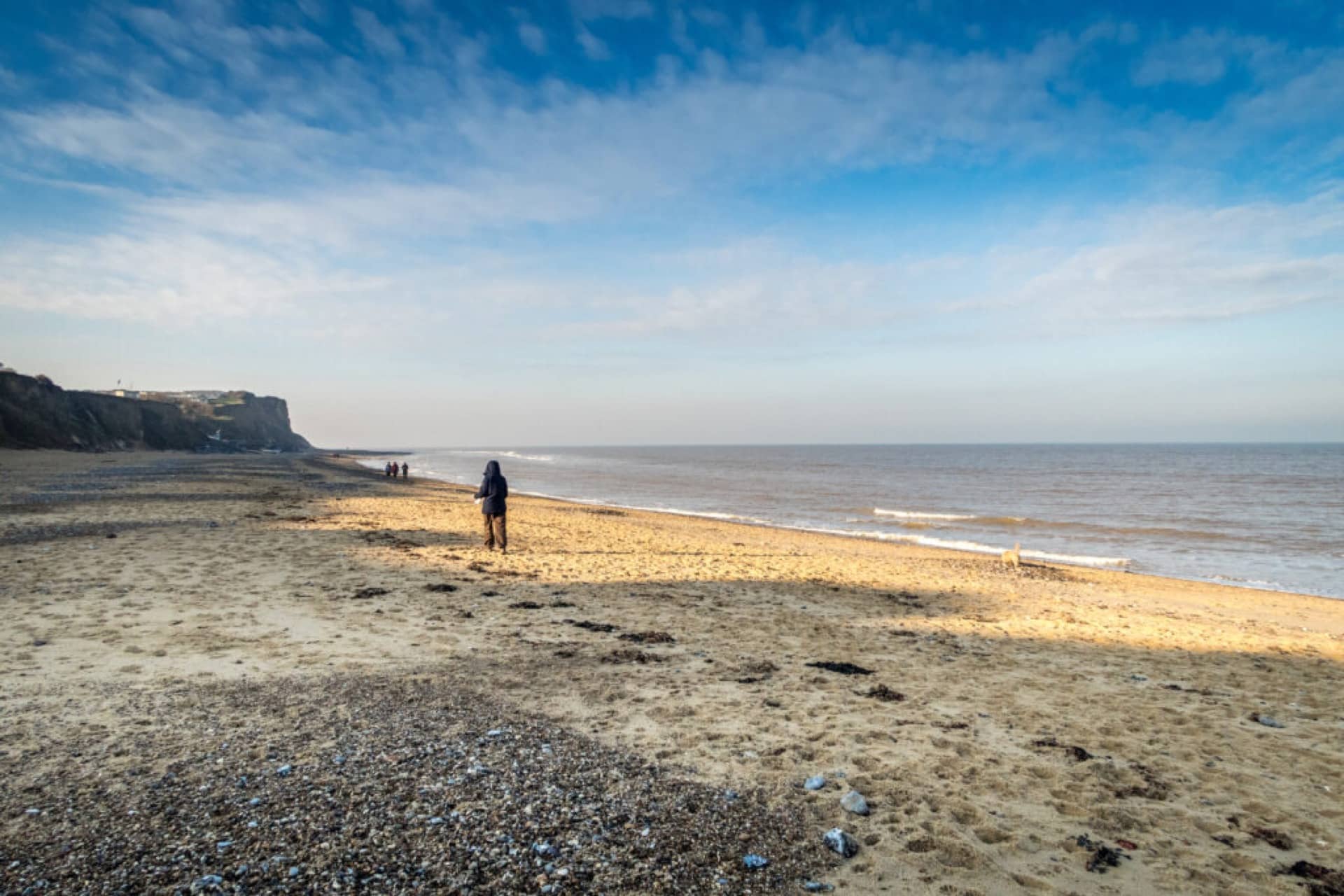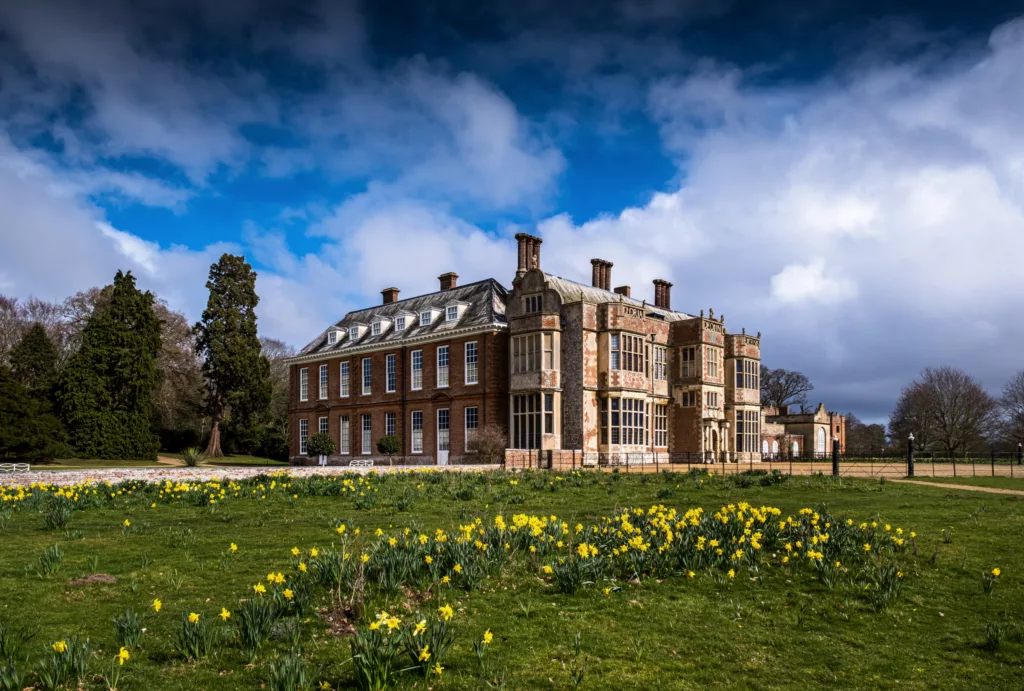
Fishermen and Kings: Olive Edis
Like an old photograph, the name Olive Edis had faded from memory. Yet photographers such as Rankin consider her a trailblazer in a field dominated by men and one of the 20th century’s most important photographers. Cromer Museum holds the world’s largest collection of her work and the ‘Fishermen and Kings’ Gallery is dedicated to the life and work of this pioneering woman.
Her sensitive use of natural light and shadow created strikingly contemporary portraits, revealing glimpses of the sitter’s inner essence. A female business founder, her innovative technical skills were entirely self-taught and included introducing colour autochrome portraits viewed through a diascope made to her own patented design.
Beginning in 1903, her work captured people from many walks of life, from Norfolk fishermen to kings, authors, poets, soldiers and politicians. Famous sitters included George Bernard Shaw, Thomas Hardy, David Lloyd George and Emmeline Pankhurst. She was also the first British woman appointed as an official war photographer, documenting the ravaged landscapes of the Western Front and women’s war work from nursing on hospital ships to manual labour in engine repair shops. Often working in difficult conditions, her journal, on display in Cromer, notes “One soon forgets the tiredness and the discomfort but not the wonderful things one has seen.”
And there’s plenty more to explore at this award-wining museum. From a Victorian fisherman’s cottage right back to fossils like the astonishing West Runton mammoth, varied galleries tell the story of Norfolk’s ever-changing coastal history.

The Cromer lifeboatman, Henry Blogg
In every coastal community courageous souls set sail into terrifying storms when inland folk stay safe at home. Among the most famous of them all is Henry Blogg, Coxswain of the Cromer Lifeboat. By trade this modest, quiet-living fellow was a crab fisherman. In summer he rented out deck chairs and beach huts. But it was in rougher weather he made his name as ‘One of the Bravest Men who Ever Lived’.
He won the RNLI gold medal for conspicuous gallantry 3 times and the silver medal 4 times, plus the George Cross for general war service and a British Empire Medal, making him the most decorated lifeboatman in RNLI history. A national hero, commended for remarkable leadership, he celebrated the ‘dogged tenacity’ of his crew and kept the medals in his sideboard, rarely worn.
A lifeboatman since 1909, his first medals were won in 1917 when the Cromer’s lifeboat, Louisa Heartwell, launched 4 times in a relentless storm, to rescue 22 crew onboard the Pyrin, a Greek vessel. Looking forward to bowls of hot soup and a good rest after 14 hours at sea, they learned a Swedish ship Fernabo, had been blown in two by a floating mine. Rowing out more 3 times, it took another 24 hours to save the the stricken men.
By the time Henry retired aged 74 after 53 years of service, he’d saved 873 lives.

Black Shuck
It’s official, Britain is a nation of dog lovers. Unless that dog is Black Shuck! The spectral hound with a single fiery eye prowls across East Anglia, spotted everywhere from woods and lanes to coastal paths and bus stops. Midnight churchyards are a favourite haunt and Shuck seems particularly fixated on Cromer in North Norfolk – yikes!
Take a winter walk across this haunted land, as smugglers once did while nosey neighbours, terrified by their threatening tales, cowered at home by the fire. Luckily Cromer’s winding streets are full of pubs, cafés, delis and restaurants to get away from roaming phantoms, ready for a night of good food and cosy ghost stories.
Black Shuck is a spirit of the old world and the new, stalking from legend into popular imagination through films, graphic novels, video games, rock music and Sir Arthur Conan Doyle’s Sherlock Holmes story ‘The Hound of the Baskervilles’. In his 1901 ‘Highways & Byways in East Anglia’ W.A. Dutt wrote: “you will do well to shut your eyes if you hear him howling; shut them even if you are uncertain whether it is the dog fiend or the voice of the wind you hear.” A sighting is said to foreshadow misfortune, though others say Shuck guides lost travellers to safety over the marshes. Perhaps it depends if your pocket’s full of doggie treats! But just in case, if you’re passing a Norfolk churchyard at night, take local advice and don’t make eye contact with any giant hell hounds!

Deep History
On a winter walk at West Runton you’ll probably see a few happy dogs racing on the beach. Yet go back about 600,000 years and you’d be more likely to see elephants. Actually, Harold and Margaret Hems did see one, in December 1990. At least, they saw its pelvic bone, poking out of the cliff after a violent winter storm. Five years later a full excavation unearthed the oldest and largest Steppe Mammoth skeleton ever found in the UK. Standing at 4m tall and weighing 10 tonnes, this gigantic prehistoric mammal has become a local legend.
A towering creature, the Steppe Mammoth – Mammuthus trogontherii – roamed this ancient place with rhino, bison, beaver, hyena and also stone age settlers. But they shared a very different view to the one we see today. In fact our ancestors could have walked from Norfolk to Holland without getting their feet wet because the choppy North Sea was a land of rivers, grasses and savannah. Imagine that as you gaze at the horizon!
The mammoth’s near complete but fragile skeleton is preserved by Norfolk Museum Services. You can see part of it in Cromer Museum and find out more at West Runton Beach Café’s learning hub.
When winter gales scour the Norfolk coast and chunks of eroding cliff crumble down, a walker might scout a pre-historic fossil, perhaps a fragment of deer antler or mysterious mammal bone. But no one has been as fortunate as Mr and Mrs Hems. At least, not yet…

The Ghostly Bookworm of Felbrigg Hall
Felbrigg Hall is one of East Anglia’s most delightful 17th century country houses, an elegant blend of opulence and comfort, with rooms full of pleasure and surprise. Accessible walks are wonderful in all seasons, with 380 acres of parkland, woods and a beautiful Walled Garden. After a stroll, wander over to The Squire’s Pantry tea room for a hot lunch, afternoon tea or ice cream in the pretty courtyard.
There’s also a well-stocked second-hand bookshop, which would delight at least one of Felbrigg’s historic owners…
William Windham III, a Whig politician, inherited the hall in 1749. Fanny Burney wrote he was ‘one of the most agreeable, spirited, well-bred and brilliant conversers I have ever spoken with’, no doubt due to his voracious reading. He was a total book fanatic. But he paid for it with his life.
One summer night in 1809 he saw a house fire in Conduit St, London, a few doors away from the property of a friend with a valuable library. Although nicknamed ‘Weathercock Windham’ for his notorious political indecision, this time he didn’t hesitate and rushed to rescue the books before they were caught in the flames. Running with heavy volumes, he fell and damaged his hip which developed a tumour needing surgery the following year. He never recovered and died in June 1810.
But there’s one more chapter. With all eternity to catch up on his reading, Felbrigg staff sometimes see Windham’s ghost sitting in the library, peacefully enjoying his books.

Sheringham Park: A Vision in a Red Leather Book
Looking for Norfolk’s best winter walks? Try Sheringham Park. Rolling over nearly 1,000 acres of landscaped parkland and wooded glades it was designed by Humphry Repton to frame some of Britain’s most magnificent sea views.
Repton’s landscape proposals of 1812 are documented in one of his famous red leather books of which only 200 survive. He wrote ‘Sheringham possesses more natural beauty and local advantages than any other place I have ever seen’. Thus enchanted, Sheringham Park stands as one of the finest examples of Humphry Repton’s work and vibrant source of inspiration for landscape designers. Many of his plans were implemented by others, but Sheringham is true to Repton’s original vision; perhaps that’s why it was one of his favourites.
Paths meander through magical woodlands, farmland and down to coastal cliffs, glorious walking all year round. In late spring, shiny evergreen rhododendrons burst into gorgeous bloom, starred with abundant azaleas. Hot pink, bright orange, sassy purple, aflame with showy reckless energy. No wonder the Victorians associated them with danger as well as passion and abundance! See the clouds of vibrant colour from the tree-top tower which gives a 360º view of the park.
Four routes explore different aspects of this idyllic Victorian landscape. Time the Red Route to meet the steam train at Weybourne Station for a heritage ride back to Sheringham. Sheringham Park is brilliantly accessible for disabled visitors, with hearing loops, large print maps, Braille guides, wheelchairs and battery powered vehicles available at the Visitor Centre.
Build your own itinerary
If you fancy creating your own itinerary for a day trip to Norfolk or a longer visit, it couldn’t be simpler. Just go to Search Activities and select from our wide range of free and paid-for experiences, saving any that capture your imagination with the click of a button.
Once you’ve finished, you’ll find all the information stored in My Favourite, where you can drag and drop activities to create your own day-by-day itinerary! You can download this to a calendar and even share it with friends.
